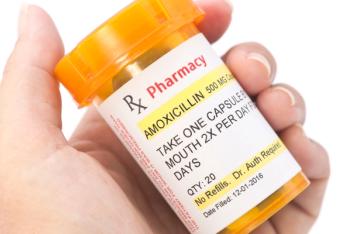
Turning Real-World Data into Actionable Drug Development Insights With AI
Key Takeaways
- AI accelerates drug development by enhancing target discovery, protocol optimization, and manufacturing efficiency, while reducing costs and timelines.
- Platforms like Moxie-Link integrate clinical environments into research, turning encounters into research-grade signals without burdening clinicians.
Gustavo Ferrer, MD, explains how AI accelerates drug development and manufacturing, streamlining clinical data into actionable pharma insights.
In an interview regarding his presentation “Harnessing AI in Clinical Practice to Drug Development and R&D. From the Bedside to Benches” at
PharmTech: How is AI supercharging drug development, discovery, and manufacturing?
Dr. Ferrer: AI is compressing timelines and reducing costs across the drug development lifecycle:
- Target discovery and molecule screening: Predictive modeling identifies promising candidates thousands of times faster than traditional methods.
- Protocol optimization: AI learns from studies to shape inclusion/exclusion criteria that improve enrollment speed and site performance.
- Decentralized clinical trials: Remote patient monitoring, telemedicine, ePRO/eTRO, and automated documentation increase retention and diversity.
- Manufacturing efficiency: AI-based anomaly detection, yield prediction, and supply chain forecasting reduce batch failures and downtime.
- Device performance, usability studies, and human factors: This includes identifying patients, optimizing the protocol, and tracking patients carefully.
Platforms like Moxie-Link take this further by integrating the care environment directly into research operations, producing real-world datasets that inform formulation, device design, and post-market surveillance. This turns every clinical encounter into a regulated, research-grade signal, without burdening clinicians.
How can AI translate real-world patient data into actionable intelligence for drug development and R&D?
AI’s true power lies in pattern recognition across messy, real-world data:
- Natural language processing extracts phenotypes, comorbidities, and device usability feedback from unstructured clinical notes.
- Predictive analytics detect adverse trends earlier than traditional reporting.
- Human-factors telemetry quantifies how patients actually interact with medical devices in the wild.
- Dynamic eligibility algorithms identify trial candidates at the point of care.
In Moxie-Link, these insights automatically feed dashboards that can refine protocols, identify responder subpopulations, optimize endpoints, and flag new safety signals. This shortens the feedback loop between bedside observations and R&D decisions.
How do you measure the real-world impact of AI platforms compared with traditional R&D methods?
We evaluate four quantifiable pillars:
- Enrollment velocity: AI-assisted eligibility and digital recruitment accelerate accrual in decentralized or hybrid designs.
- Data completeness & fidelity: Continuous remote monitoring outperforms episodic site visits.
- Diversity & representation: Digital recruitment expands access to historically underserved populations.
- Operational efficiency: Integrated documentation, billing, telemedicine, and monitoring reduce administrative burden and protocol deviations.
In deployments across 55+ facilities, we’ve seen marked improvements in screening-to-randomization conversion, documentation accuracy, protocol compliance, and retention, all of which translate into accelerated therapeutic timelines.
How should cross-disciplinary collaboration be structured to maximize innovation while ensuring accountability and security?
Success requires distributed expertise with centralized governance. Clinical leadership ensures AI outputs align with safety, clinical nuance, and regulatory requirements. Data science teams validate models, monitor drift, and maintain explainability. Human-factors engineers ensure usability for medical device submissions. Security & compliance officers oversee data governance, consent, and audit trails. Regulatory affairs map evidence requirements across FDA, EMA, and MDR pathways.
What unresolved barriers slow wider AI adoption in pharmaceutical manufacturing?
- Regulatory ambiguity: Evolving expectations for AI/ML lifecycle management and change control for software-as-a-medical-device.
Solution: Continuous dialogue with regulators and adoption of transparency frameworks. - Data fragmentation: Heterogeneous electronic medical records, siloed registries, incomplete device telemetry.
Solution: FHIR-compliant architectures, bidirectional integration, and standardized data models. - Trust & explainability: Operators must understand why a model recommends an action. This is why we use human intervention as quality assurance to double-check the performance of AI.
Solution: Human-in-the-loop design and bias-detection dashboards. - Workforce readiness: Manufacturing teams need digital fluency. At Moxie, we created an academy with interactive courses to train staff and improve the customer experience.
Solution: Embedded training and intuitive user experience designed by clinicians and engineers.
Newsletter
Get the essential updates shaping the future of pharma manufacturing and compliance—subscribe today to Pharmaceutical Technology and never miss a breakthrough.





